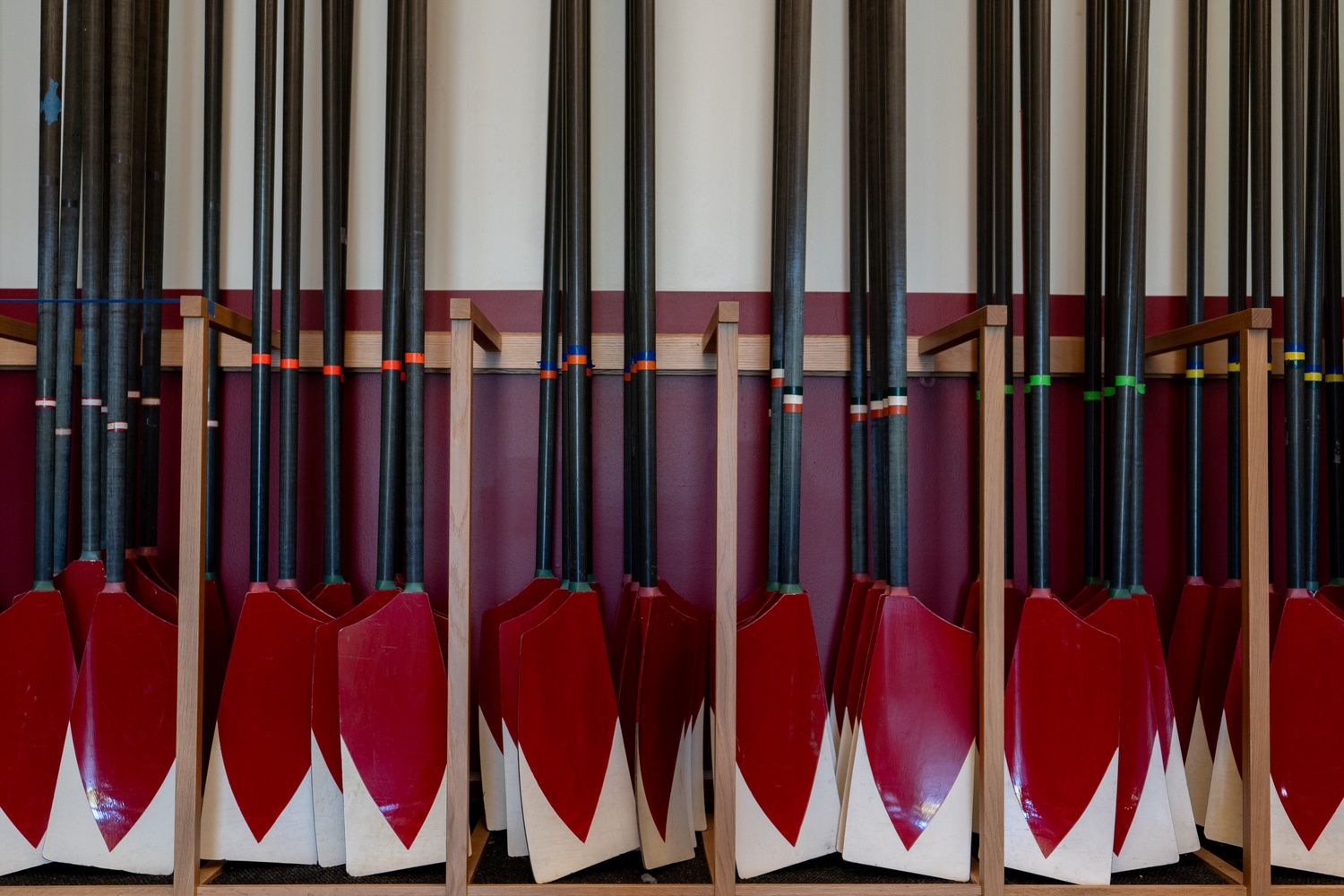
News
Summers Will Not Finish Semester of Teaching as Harvard Investigates Epstein Ties

News
Harvard College Students Report Favoring Divestment from Israel in HUA Survey

News
‘He Should Resign’: Harvard Undergrads Take Hard Line Against Summers Over Epstein Scandal

News
Harvard To Launch New Investigation Into Epstein’s Ties to Summers, Other University Affiliates

News
Harvard Students To Vote on Divestment From Israel in Inaugural HUA Election Survey
Before They Were Presidents, They Were Harvard Rowers

Decades before he began to steer Harvard from Massachusetts Hall, University President Alan M. Garber ’76 learned to steer from the stern seat of a boat on the Charles River.
In the fall of 1973, Garber walked into Harvard Yard as a freshman from Rock Island, Illinois, looking for a place to fit in among the crowds of new students. He began searching for it on the banks of the Charles, leading him to Newell Boathouse, where he set his sights on joining the crew team.
“Crew beckoned to me. To this Midwesterner, it was exotic, picturesque, and arguably the quintessential Ivy League sport,” Garber wrote in a statement to The Crimson.
Garber’s enthusiasm soon met an obstacle: he was too light and too short to row, even for the freshman lightweight team. But the setback didn’t keep him off the water. Instead, he found a place as coxswain — the crew member responsible for steering the boat and calling commands.
As coxswain, Garber said he quickly found his community at Harvard. “Thanks to crew, I was quickly immersed into life at Harvard and met a great group of classmates who became my friends,” he wrote.
Garber reflected on his rowing days at Harvard earlier this year when he addressed more than 1,000 rowers and alumni at a May event celebrating the completion of the University’s four-year Boathouse Renewal Project, which renovated both Newell and Weld Boathouses.
“Like each of you, I learned a great deal about rowing — and from rowing for Harvard,” he said. “There is our history and the proud traditions it has nurtured and sustained. To me, they never grow old.”
Garber did not remain on the team for long — he does not appear in the freshman lightweight roster for the spring of 1974 — but he told The Crimson the lessons of rowing have stayed with him throughout his career.
“Crew is about more than companionship. It teaches enduring lessons,” Garber wrote. “To move fast requires not only sustained effort but exquisite synchronization. Individual performance is not what really matters since it only leads to victory when it’s harnessed to tight coordination. Teamwork is everything in rowing.”
“And when, like me, you're a coxswain, it's important to know when to steer straight and when to turn. And to know how far you can push the rowers,” he added.
The lessons of Harvard rowing have spread wide and far — its alumni have held seats in the Oval Office, shaped legislation on Capitol Hill, become renowned scientists, and founded major companies.
Garber himself was on the freshman lightweight team just a year after Secretary of Health and Human Services Robert F. Kennedy Jr. ’76 rowed for Harvard on the same team.
Two U.S. presidents — Theodore Roosevelt, Class of 1880, and Franklin D. Roosevelt, Class of 1904 — also rowed during their undergraduate years at Harvard. Rowing was among the University’s most prominent sports in the late 19th and early 20th centuries, and both Roosevelts took to the Charles before moving into the White House.
Neil deGrasse Tyson ’80, now one of the nation’s most recognizable scientists, also rowed for Harvard. Tyson rowed in the Head of The Charles regatta as a freshman but quit the team because he thought “the repetitiveness of the rowing stroke was not interesting.”
More recently, Cameron S. H. Winklevoss ’04 and Tyler O. H. Winklevoss ’04 rowed for Harvard’s heavyweight crew and went on to represent the United States at the 2008 Beijing Olympics. The twins — known for their legal battle with Mark E. Zuckerberg over the founding of Facebook — now lead a venture capital fund and cryptocurrency exchange.
Thousands of rowers and rowing enthusiasts descend upon Cambridge for the Head of The Charles regatta each year. As president of Harvard, Garber sees the tournament as a time to celebrate the athletic prowess of competitors and the lessons they learn from competing.
“As people gather for the Head of the Charles, we look forward to cheering exceptional athletic achievement and celebrating the important lessons that come from participation in sports,” Garber wrote.
Want to keep up with breaking news? Subscribe to our email newsletter.
